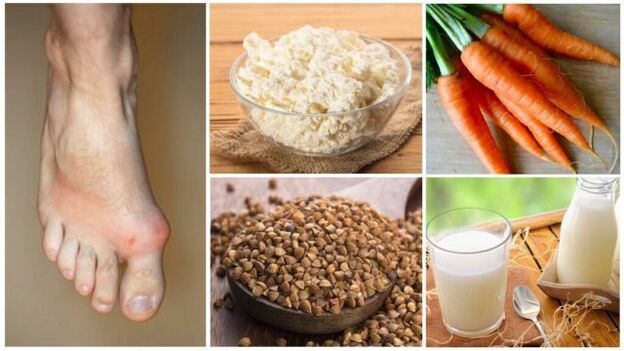
Malnutrition, coupled with malabsorption of nutrients, can lead to the development of gout. When the level of uric acid in the blood exceeds the allowable limit (420μmol/l for men and -350μmol/l for women), the disease will develop. Disturbance of the metabolic process leads to the fact that the acid salt deposits on the intestinal wall, blood vessel wall, joint surface, and destroys important human organs.
Over time, this disease will become chronic and often recur. In the acute phase, the patient will experience severe pain locally in the pathological process. The gout diet helps to normalize uric acid levels and reduce the possibility of recurrence.
Why eat gout?
The important task of treatment measures is to reduce the nature and frequency of disease manifestations. This can be achieved by reducing the amount of uric acid in the body.
The development of gout attacks is caused by:
- Eat a lot of purines in food;
- Metabolic disorders.
Optimizing your diet can start to absorb and excrete substances properly. Treatment measures aimed at eliminating the causes of disease development are closely related to compliance with certain food addiction restrictions. With a properly composed diet menu, you can slow down the progression of the disease.
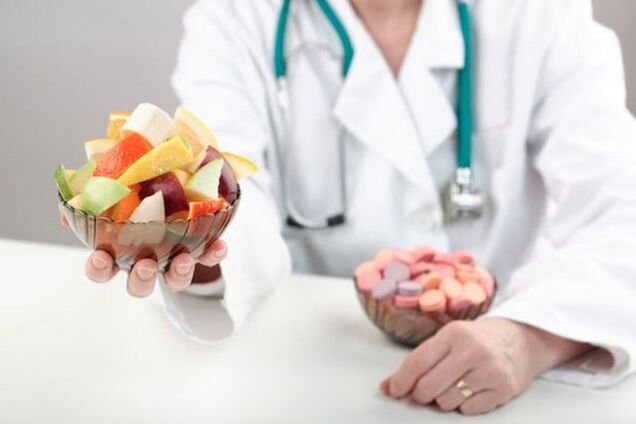
The food that constitutes a person's daily diet should include foods with a large amount of substances beneficial to the body.
Nutritional therapy for gout aims to reduce symptoms by eliminating the food components that cause symptoms. Generally, the products that people consume every day have a huge impact on their health and are responsible for the chemical processes that occur in the human body during their lifetime.
What should not eat for gout?
Based on these studies, scientists have identified a series of products that directly caused the initial development of the disease and its further development.
Foods not suitable for gout include:
- Smoked spicy cheese and cheese products;
- Cholesterol-rich meat and bone products (young animals and pigs, hooves, pulp of buldyzhki);
- Meat and bone fat, ears;
- Fish with high fat content (sardines, sprats);
- Pickled vegetables, pickled fruits (cabbage, watermelon, cucumber, apple);
- Hot and cold smoked products;
- Legumes (peas, beans, soybeans, lentils);
- Vegetables containing oxalic acid (spinach leaves, sorrel, rhubarb root);
- Condiments, seasonings;
- Some vegetable crop varieties (Brussels sprouts and broccoli, turnips);
- Animal internal organs (kidney, liver, lung, heart, brain) obtained from carcass slaughter;
- Oatmeal;
- Products that use confectionery fat;
- Any percentage of alcohol;
- Fruits and berries (grapes, raspberries, figs);
- Hot, spicy and ethereal spices (Bay leaf, horseradish, chili);
- Fatty products of animal origin (lard, margarine, lard);
- Canned meat, fish and vegetable products.
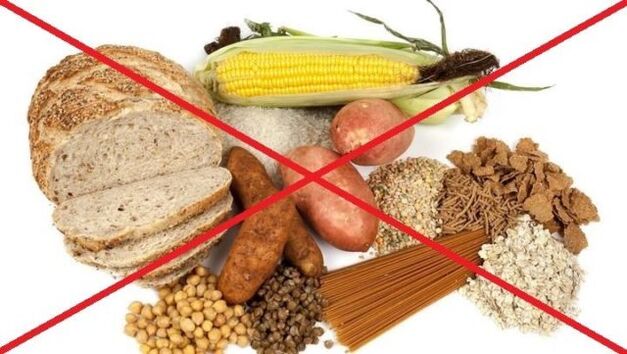
If the diet is unbalanced or the digestive system contains a lot of fat, spicy or heavy food, then the person's metabolism may be disturbed.
List of products recommended to restrict use:
- Coffee, strong tea;
- butter;
- Plum;
- Solanum vegetables (eggplants, tomatoes, peppers);
- Table salt, sugar;
- Mushrooms (only in relief).
In order to relieve the attack and maintain remission, it is important to remove the above foods from the diet for a long time.
What can I eat for gout?
Recommended food list for patients with this disease:
- Dietary meat products (rabbit, poultry, lean beef);
- Lean white fish (pike, pike perch, cod, pollock);
- Bran and rye bread;
- Eggs (except egg yolk);
- Cereal dishes (rice, wheat, buckwheat, millet, pearl barley);
- Fresh vegetables (beets, carrots, cucumbers, cabbage, potatoes);
- Seasonal fruits, berries (watermelon, melon, apricot, strawberry, peach, cherry, blackberry, green apple);
- spaghetti;
- Nut kernels (hazelnuts, walnuts, cedar);
- Herbal tea and decoction (Dubrovnik, basil, catnip);
- Fermented dairy products, cheese
- Freshly squeezed fruit juices, fruit drinks, preserves;
- Cooked tomatoes
- Spices (turmeric, fennel, basil);
- Vegetable oil (olive oil, rapeseed oil).
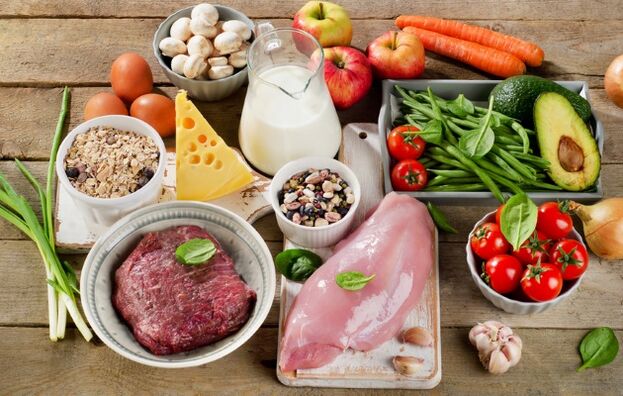
Nutritional therapy for gout will help patients quickly get rid of the discomfort and painful symptoms at home.
A limited amount of natural honey can be used for gout. This product is suitable as a substitute for sugar.
Honey has many beneficial properties:
- Immune stimulation
- Antioxidants
- Improve metabolic process;
- Bactericidal.
In the acute phase, you should not abuse this beekeeping product. Patients suffering from this disease need to eat foods rich in vitamins, trace elements and amino acids. A useful supplement is medicinal fish oil for gout.
General food regulations
Removing certain contraindicated foods from your regular menu does not guarantee immediate relief. In addition, the product list will vary, depending on the stage and severity of the disease process. Therefore, the nutritional requirements for gout during exacerbations are more restrictive than during remission.
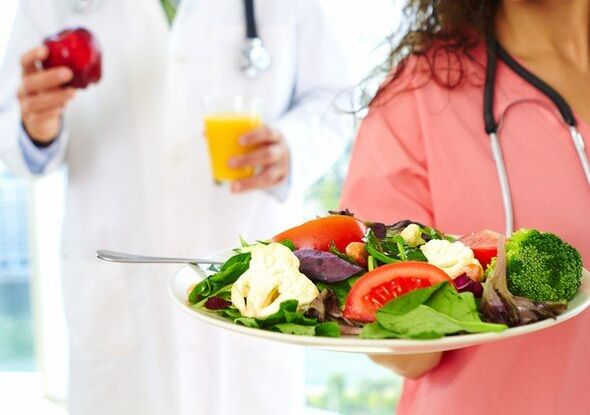
For patients suffering from this disease, there is a set of general rules, which should be followed in diet therapy:
- Eat small amounts of food several times a day at short intervals (5-6 times). Starvation causes an increase in acetone in the urine. This will aggravate the course of the disease.
- Chew food thoroughly and don't overeat.
- Limit the amount of salt used in preparing dishes (up to 5 grams per day). Salt has the property of retaining fluid in the tissues, which in turn leads to the deposition of urate.
- Optimize fluid balance. For this reason, it is recommended to drink at least 2 liters a day.
- Arrange fast days. Vegetables, dairy products and fruits are best (except for those that are prohibited to eat).
- Long-term adherence to use restrictions, because short-term use of therapeutic diets is not effective.
People with severe metabolic disorders and a history of diabetes and gout need to eliminate dishes that cause blood uric acid and insulin levels to jump. The gout and diabetic diet aims to reduce these indicators to avoid exacerbations and complications.
How to prepare food correctly?
Grocery list restrictions are not the only items to comply with. When preparing meals, it is important to choose the correct cooking method.
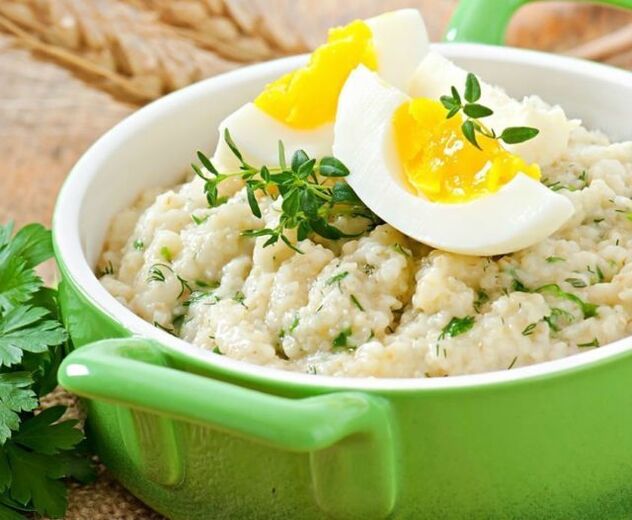
Except for meat processing, there are no special requirements for product preparation.
Cooking can be done in the following ways:
- A couple
- bake;
- Extinguishing
- boiling;
- . . .
Cooking taboos:
- Fried
- smokes;
- Pickling and pickling;
- Ferment.
Do not use stale, burning food. The temperature range of edible food should be the most suitable for the food, and the temperature should not exceed 40 degrees Celsius. Food should not be rough and tough. If necessary, use a blender to chop up individual dishes.
Efficient diet: daily menu
In terms of medical nutrition, the content of important components (protein-carbohydrate-fat balance), calories, vitamins, trace elements, and amino acids should correspond to the physiological needs of patients.
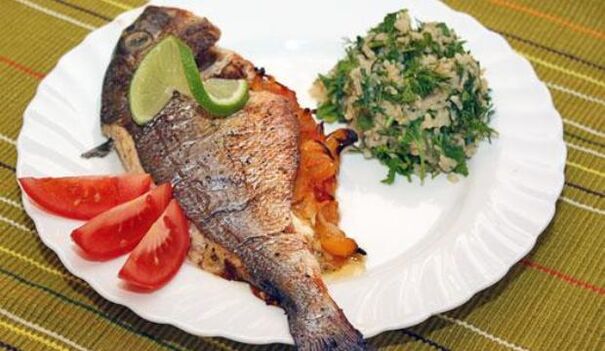
Approximate diet for gout and high uric acid:
1 day
The first breakfast: boiled cod, mashed potatoes, black bread, cabbage salad, seasoned with sour cream, a cup of weak coffee with saccharin.
The second breakfast: cheese casserole, boiled eggs, bran bread, tea drinks.
Lunch: vegetable soup with fried roots and potatoes, beef stew, buckwheat porridge, fresh cucumber, 1 apple.
Dinner: carrot patties, pasta, milk, biscuits.
In the evening: 200 ml kefir.
the next day
The first breakfast: stewed cabbage, a boiled egg, black bread, cappuccino.
The second breakfast: cappuccino, biscuits and biscuits.
Lunch: lean borscht, bran bread, roasted poultry tenderloin, boiled rice, jelly.
Dinner: Potato stewed vegetables, casserole vegetables, bran bread with butter, stock.
In the evening: 250 ml of curd.

The third day
The first breakfast: vegetable salad (cabbage, carrots, apples), weak coffee.
The second breakfast: yogurt with yogurt, rosehip broth.
Lunch: sour cream barley soup, steam schnitzel, mashed potatoes, berry jelly, whole wheat bread.
Dinner: Carrot schnitzel with fruit, semolina casserole and a glass of milk.
Before going to bed: Steam the plums.
Day 4
The first breakfast: grated carrots, sour cream, oatmeal, a cup of green tea.
The second breakfast: dried fruit patties, candied fruit, biscuits and biscuits.
Lunch: milk noodles, boiled chicken with roasted pumpkin and potatoes, jelly, brown bread.
Dinner: Bake cheesecake, carrot and apple patties in the oven, and a cup of tea with lemon.
In the evening: 200ml warm milk.
Fifth day
The first breakfast: buckwheat milk cooked in porridge, green tea.
The second breakfast: a cup of fresh carrots.
Lunch: Sour rice soup, boiled beef syrup, beetroot caviar, basil infused honey, brown bread.
Dinner: Pumpkin casserole with sour cream, a cup of light tea, biscuits.
Before going to bed: Rose hips infused with honey.
6 days
The first breakfast: chicken egg white omelet, stewed beets, white bread, a cup of weak coffee.
Second breakfast: zucchini casserole, fruit and berry compote.
Lunch: vegetarian barley soup, boiled potatoes, stewed meatballs, jelly, brown bread.
Dinner: Milk boiled rice, weak tea beverage.
Before going to bed: a cup of yogurt.
The standard nutrition plan is made by the physician. The diet allows a wide variety of meal combinations. Diet No. 6 is very common for gout. Its main principle is to exclude foods and dishes with high purine content, add alkaline beverages to the diet, and carry out gentle processing during the cooking process. Independently prepared menus with restrictions on the quantity and nature of food can lead to the continued development of diseases.














































































